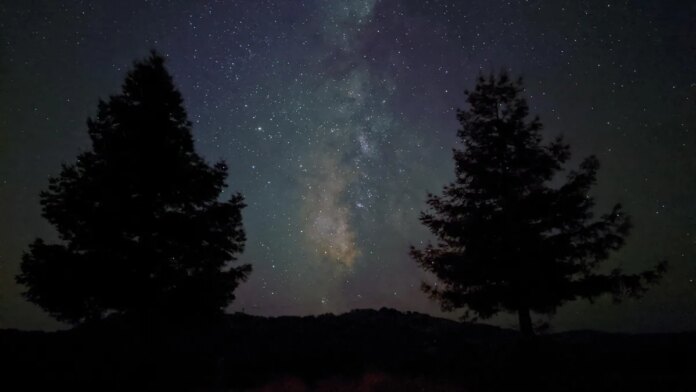At the end of last year, we experienced four consecutive supermoons, with the moon being the largest and brightest in the night sky. Have you ever wondered what we call it when the opposite happens? There’s a name for it, and it’s happening this weekend: the appearance of the black moon.
The term “Black Moon” is not an official term, but rather a nickname used when a new moon meets certain conditions. There are usually three new moons per season, just as there are three full moons. But when the stars align (pun intended), another cycle is created. When it occurs during a full moon it is called a “seasonal blue moon”, while during a new moon it is called a black moon.
The weekend of August 22 is one such event. The first new moon of the summer came relatively early, on June 25, followed by the next on July 24. The final new moon of the season arrives on September 21st, the day before summer officially ends. Since there is one more new moon, the third new moon in the group of four is called the black moon, meaning that the August moon is given this distinction.
Two types of black moons
According to Dr. Shannon Schmoll, director of the Abrams Planetarium at Michigan State University, a black moon is essentially the same as a blue moon, but with new moons instead of full moons. The same rules apply to both.
Since the solar cycle lasts 29.5 days, as Schmoll notes, this could occur roughly every 29 months.
Such a black moon is expected to appear next. August 2027when the new moons appear on August 2 and 31. The last time that happened was spring 2023.
“The second definition is the third full moon in a season of four,” says Schmoll. “So a season here is the period between an equinox and a solstice. Since it’s been three months, we usually have three moons in that period. Sometimes we have four, and the third is the ‘extra’ man.”
Occurring every 33 months, it is the rarer of the two types of black moons, making the August New Moon even more special. The next time this type of black moon is expected to occur Summer 2028when the new moons of June and September repeat in the summer, as they did this year.
For example, blue moons are also quite rare. The next blue moon is approaching in May 2026 on the 1st and 31st of the month.
But overall, Schmoll says these incidents are quirks of our calendar system and there’s “nothing astronomically significant about them” other than the fact that it’s a fun little coincidence.
You can’t see it and that’s okay.
We see the moon because it reflects the light of the sun. During the new moon, our nearest celestial neighbor is hidden behind the Earth, so sunlight cannot reach it. That means you can’t see this rare celestial phenomenon even if you try. Therefore, we advise you not to look for it.
According to Schmoll, the only way to see a new moon is to cause a solar eclipse when it passes in front of the sun.
However, there are other ways to enjoy the new moon: The moon is often cited as one of the most common and unavoidable sources of light pollution, making it difficult to find objects in the night sky. The Perseid meteor shower peaked during the full moon in August, making it harder to see dimly lit meteors even if you left cities and suburbs to enjoy the dark skies.
With this year’s Black Moon, stargazers will once again experience a night of quiet darkness without a moon in the night sky this summer. This gives enthusiasts another great opportunity to spot six planets in the sky for the last parade of six planets that we will see in a few years, and for Northern Hemisphere photographers to capture exceptional images of the Milky Way. As the Perseids end on August 23, you can also see one of the last shooting stars of this meteor shower.
So if you’ve been waiting for the darkest night to see the stars, this weekend is a great opportunity thanks to this year’s black moon.
